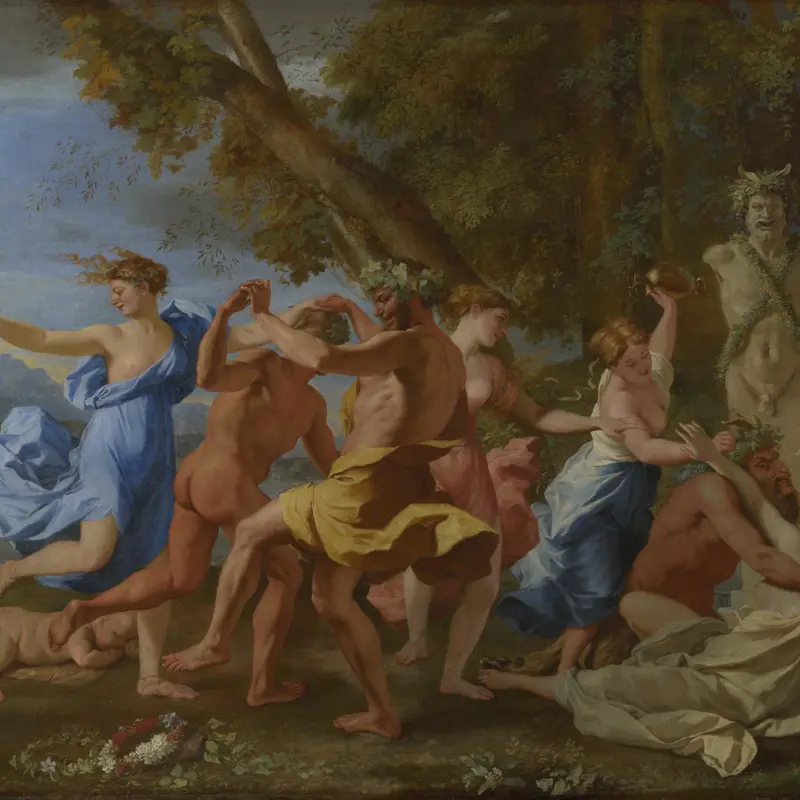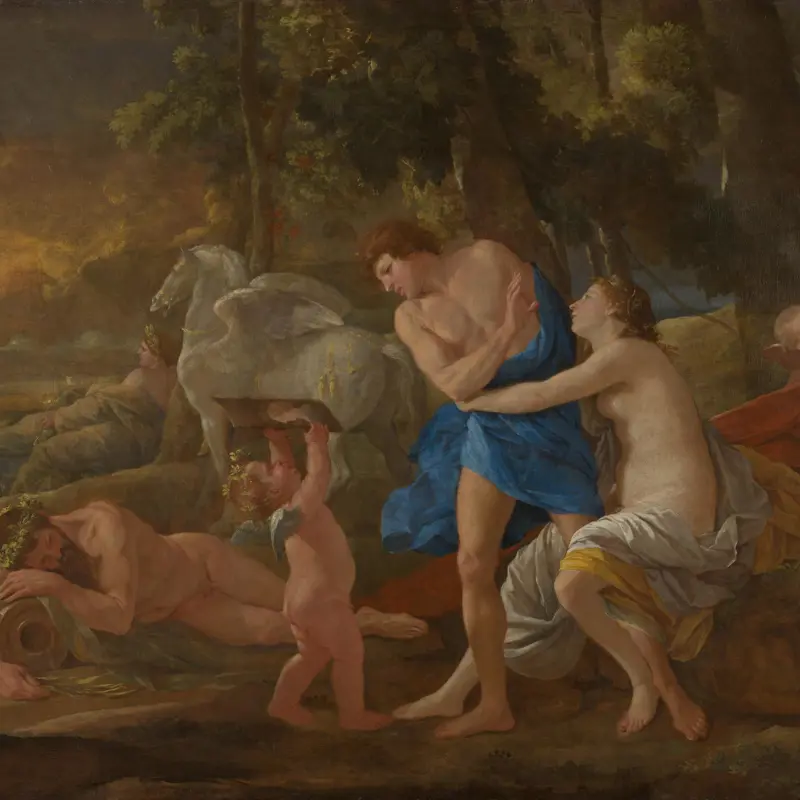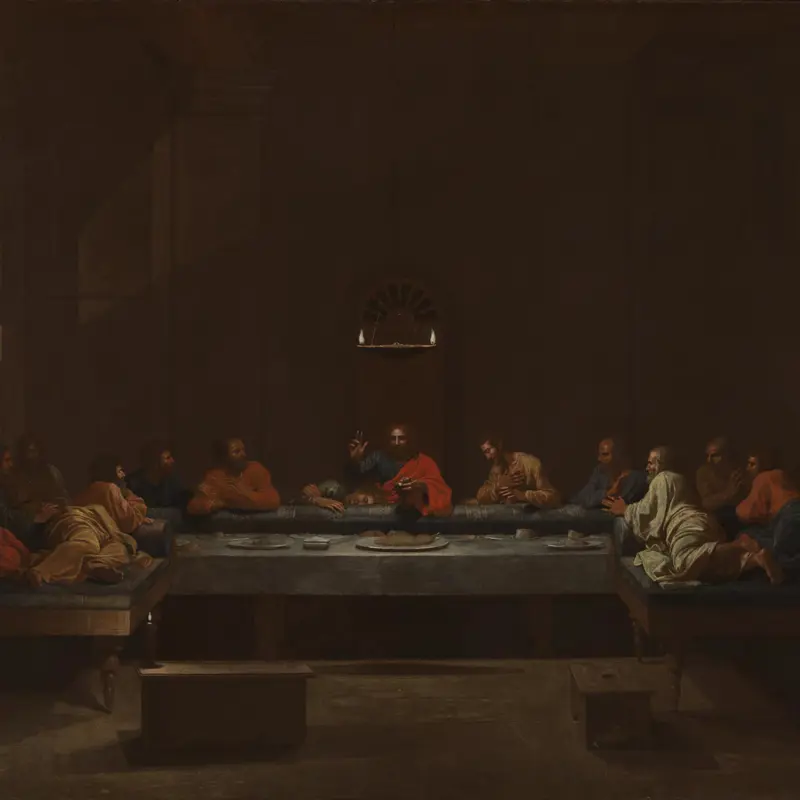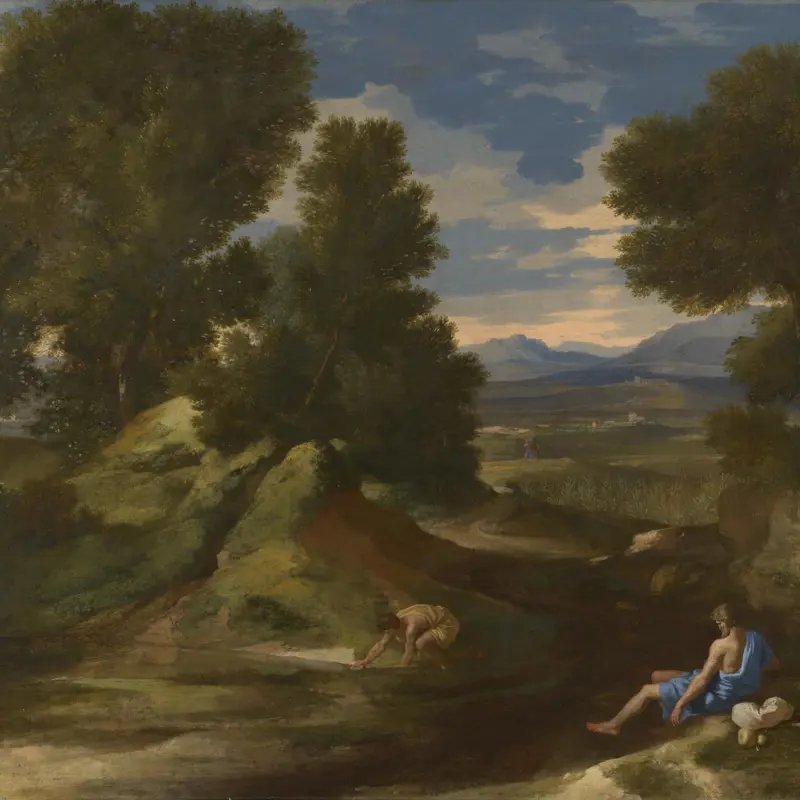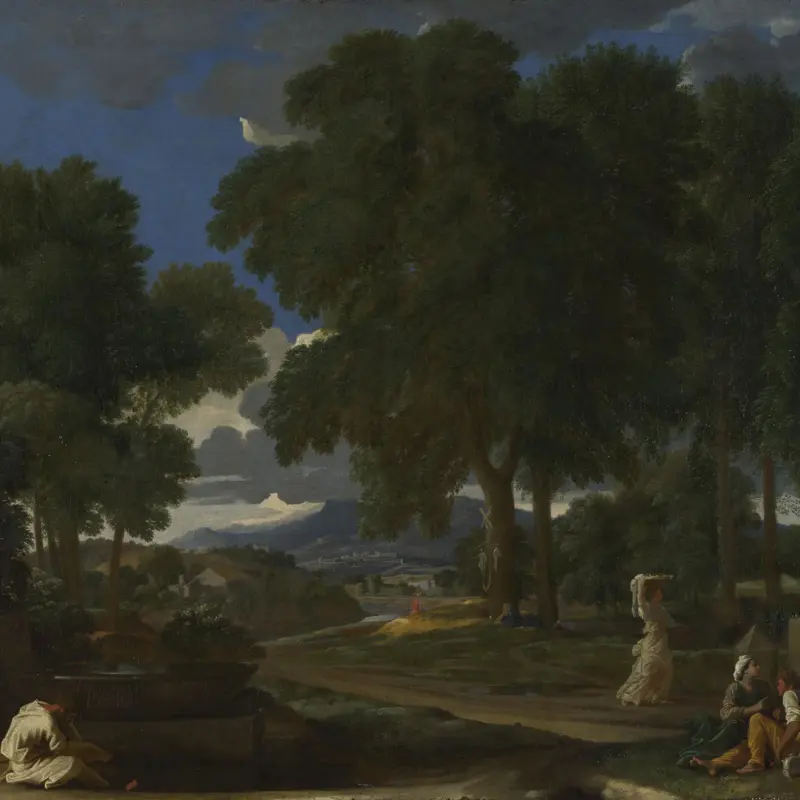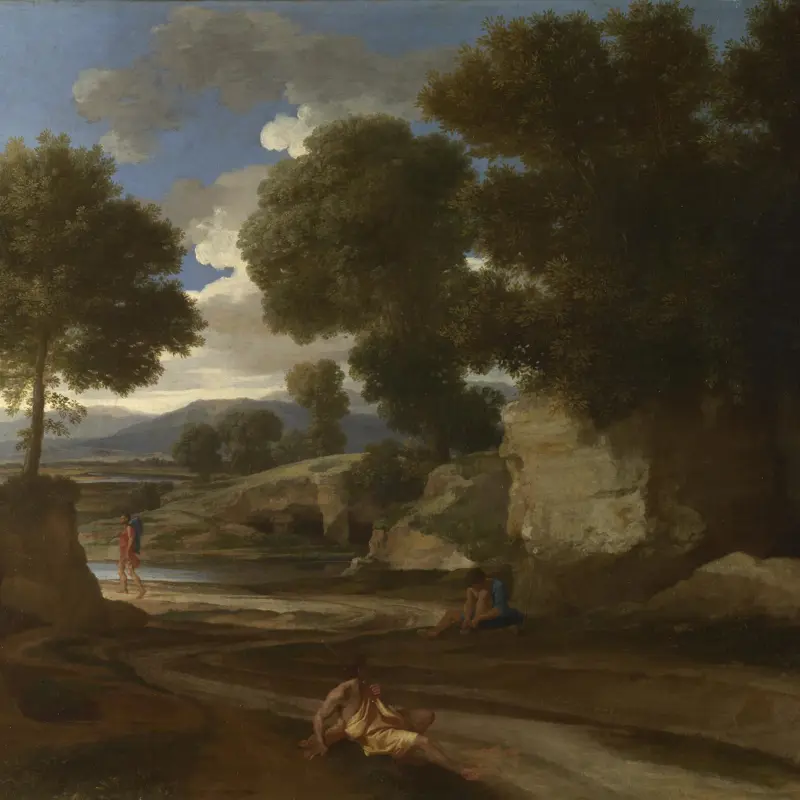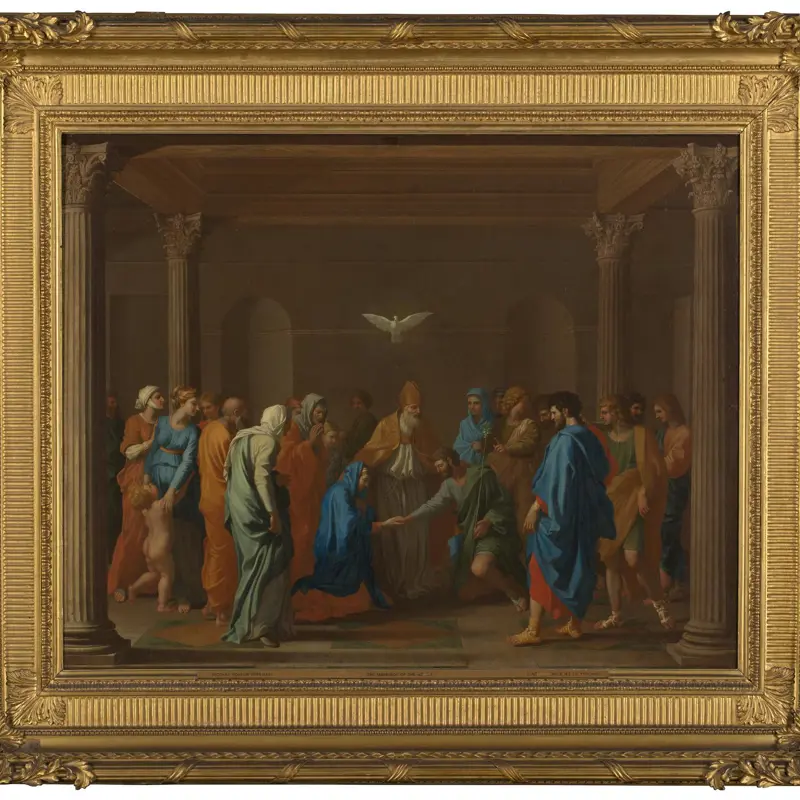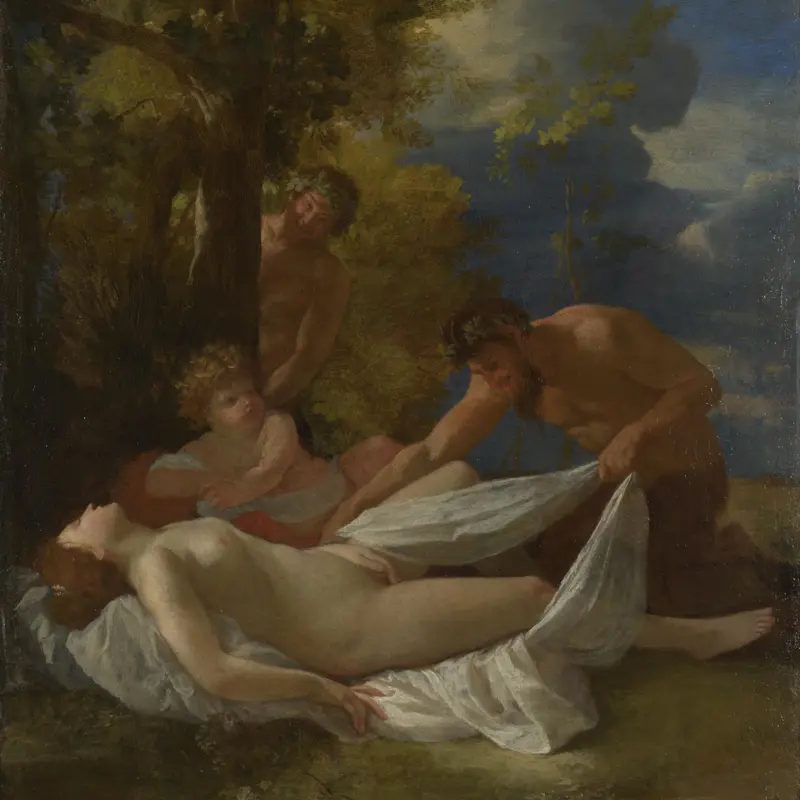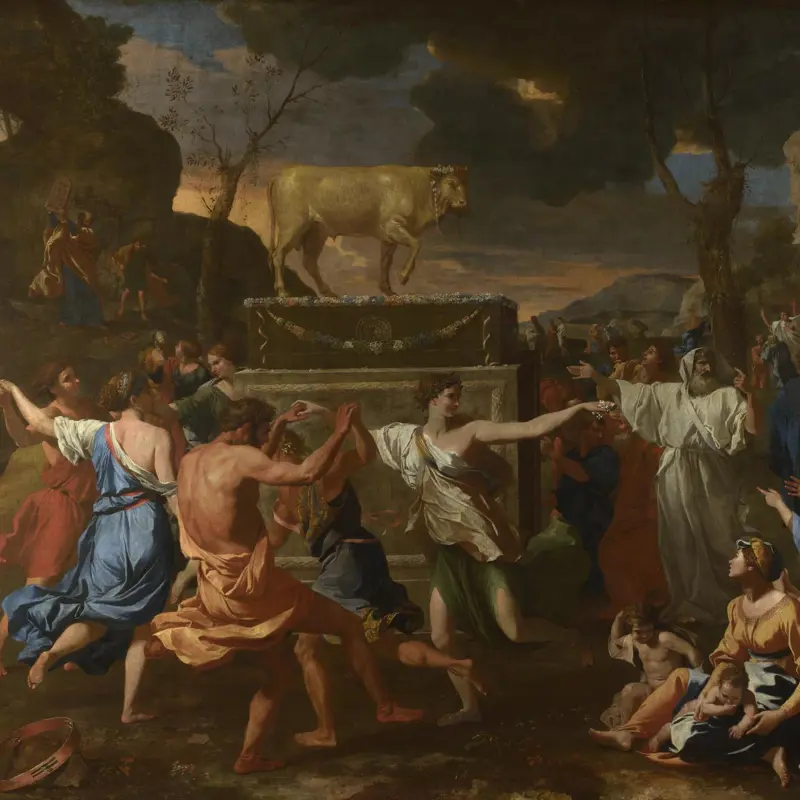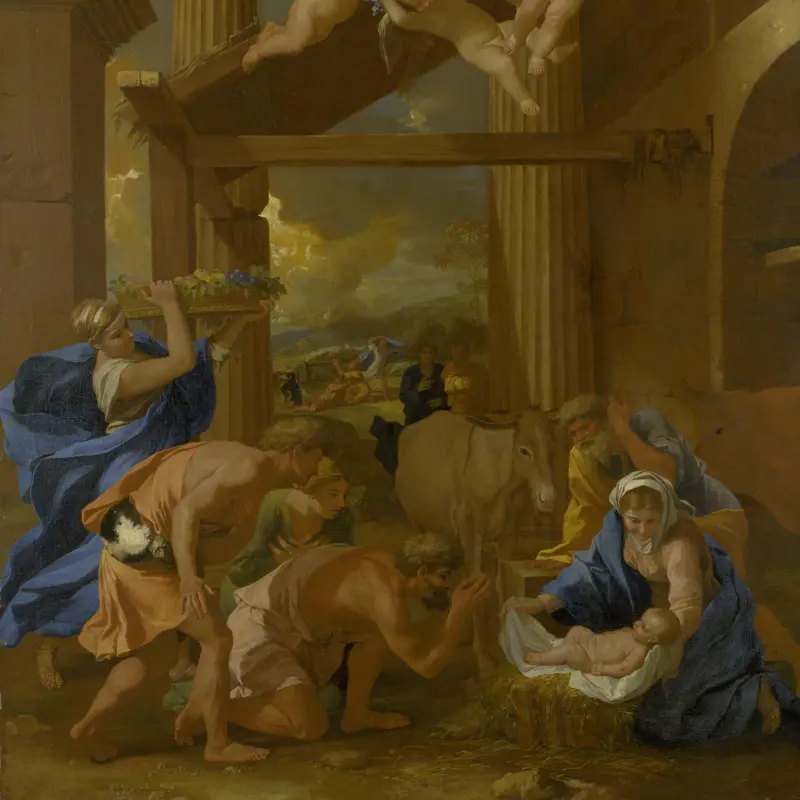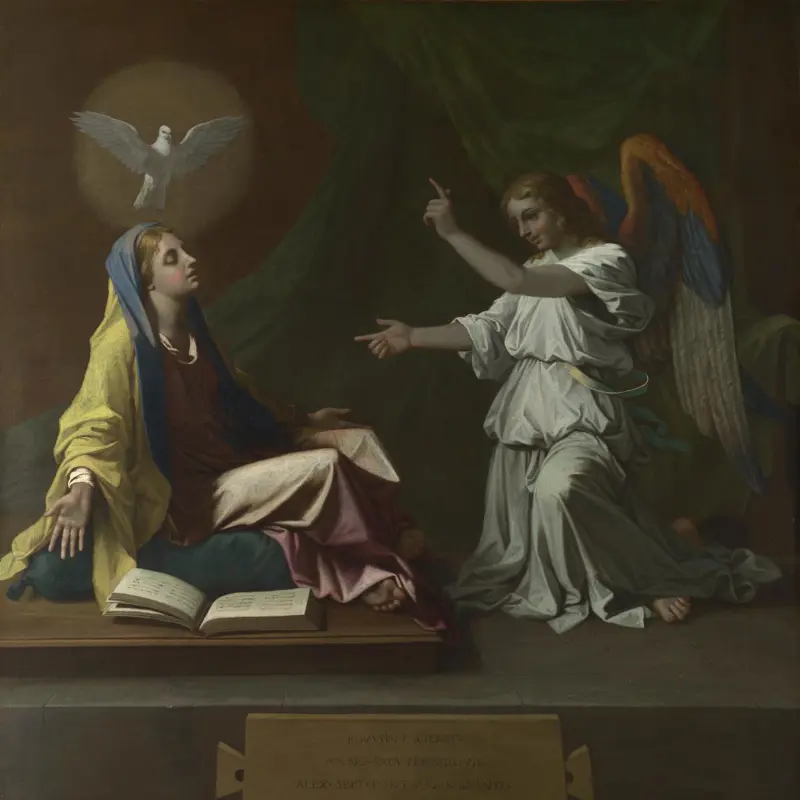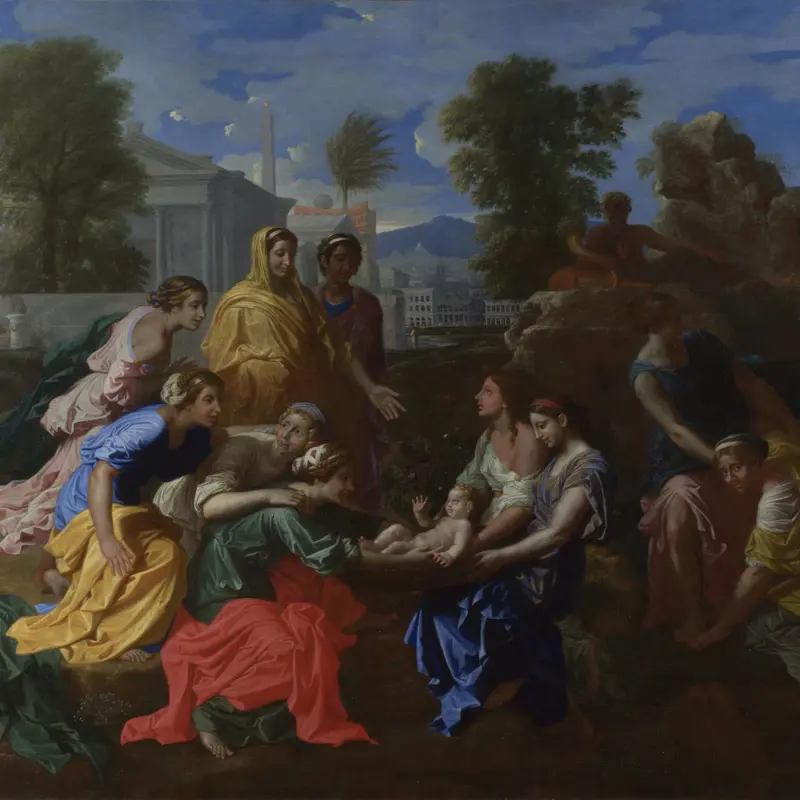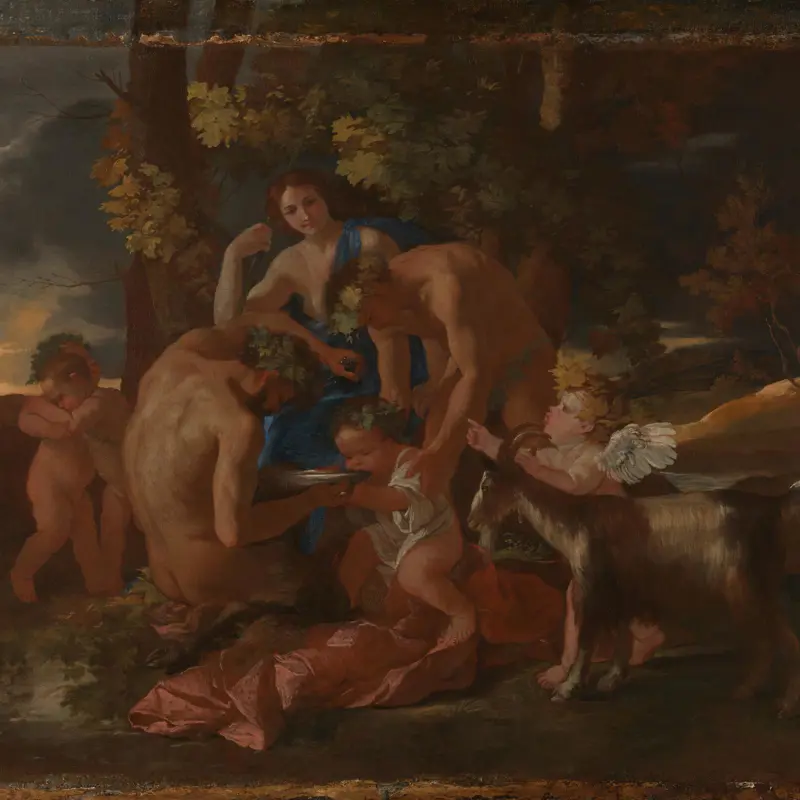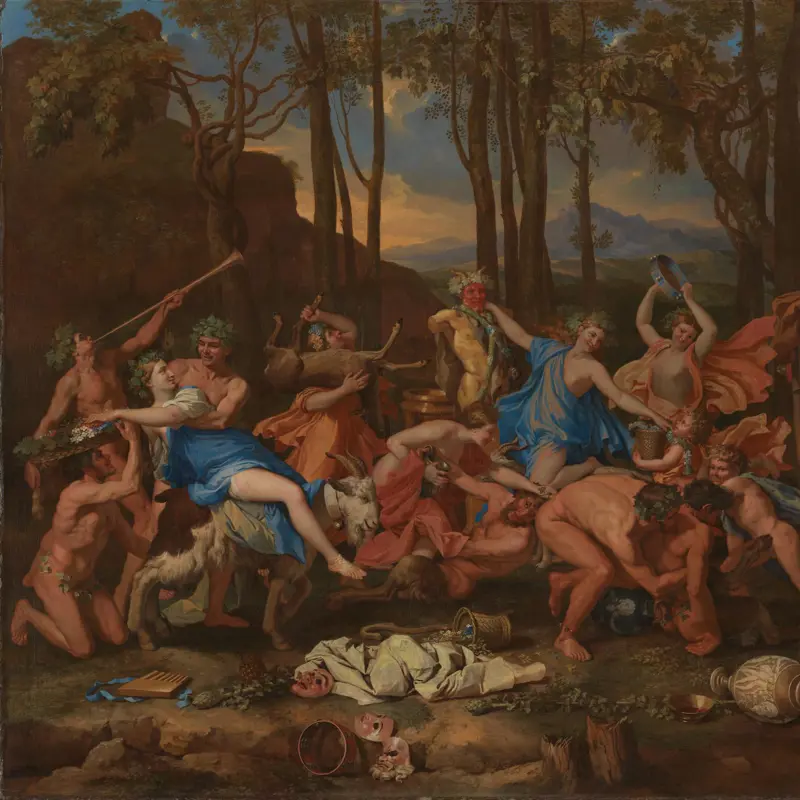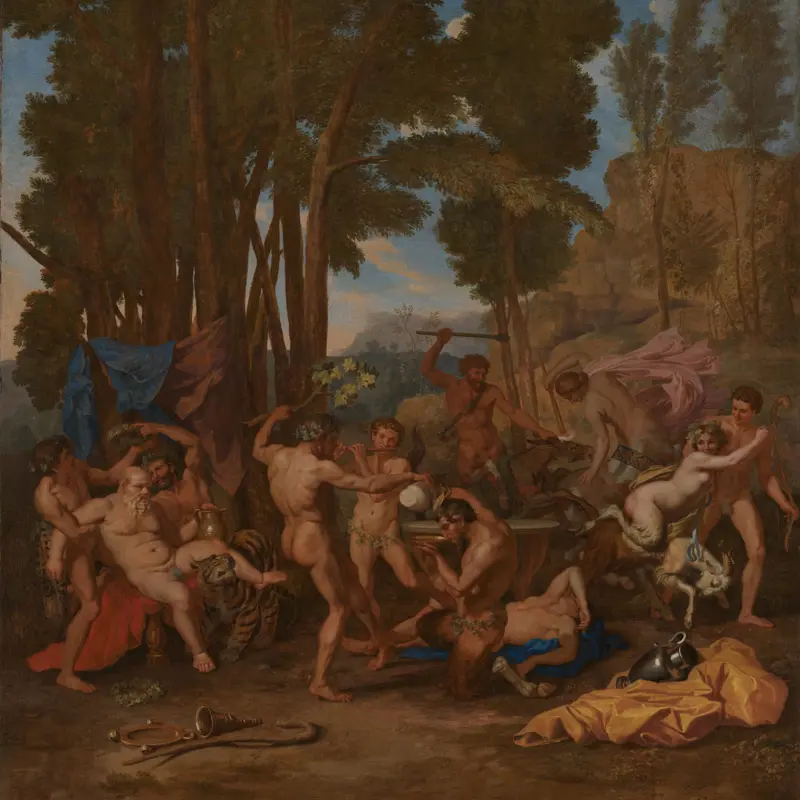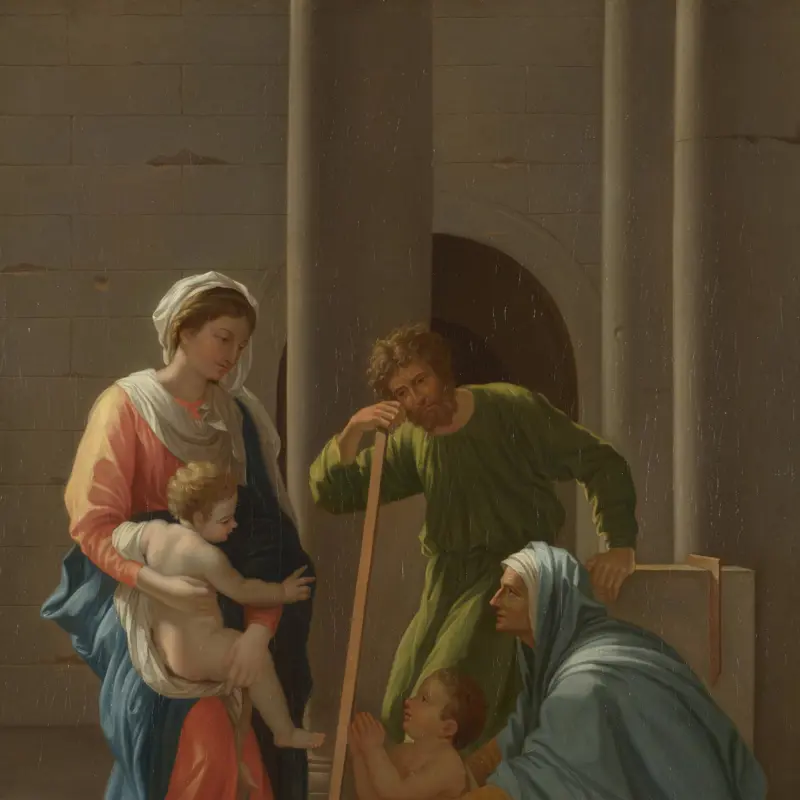Nicolas Poussin was born at Les Andelys in Normandy and first trained in Rouen. From 1612 he lived in Paris and in 1624 travelled via Venice to Rome, where he stayed for most of his life.
His sensuous early canvases such as 'The Nurture of Bacchus', reflect 16th-century Venetian art, especially that of Titian. He studied antique remains and his art reflects both this and an appreciation of Raphael. Poussin read ancient writers such as Ovid and attempted to recreate ancient myth and history in his works.
Poussin mainly painted easel paintings for private patrons. His larger works for Louis XIII, made from 1640 to 1642 on his return to Paris, were less successful. His scholarly patrons in Rome and Paris included Cassiano dal Pozzo and the notable art collector, Cardinal de Richelieu.
Poussin sketched in the Campagna, the countryside around Rome, with Claude, and from the late 1630s began to paint landscapes. He brought a powerful discipline to the composition of his paintings, which enhanced the solemnity of their subjects. In his later years he developed an intensely personal style in his religious and allegorical works.
Nicolas Poussin
1594 - 1665
Works by Nicolas Poussin
(Showing 6 of 17 works)
In this wild party, men and women dance around a term – a carved bust of a bearded and horned man. This is traditionally identified as Pan, god of woods and fields, flocks and herds, although the statue could also be Priapus, god of gardens and fertility, who wears floral garlands and exposes his...
Aurora, goddess of dawn, is in love with the mortal Cephalus and tries to seduce him. Cephalus, dressed here in blue, turns away from Aurora, rejecting her advances. He gazes towards a portrait of his wife, Procris, held by a winged cupid. Later, when Cephalus and Procris are reunited, they each...
In the late 1630s, Poussin painted one of the summits of his art: the first series of Seven Sacraments. Commissioned by his friend and patron Cassiano dal Pozzo (1588–1657), Poussin depicted the seven rites of the Catholic Church: Baptism, Penance, Eucharist, Confirmation, Marriage, Ordination an...
A man has been crushed by a snake and lies dead beside a pond: his body is limp and his skin a greenish-grey. We see a man and woman whose gestures and movement show their fear and surprise. The way the landscape is constructed reveals the drama in stages: the running man sees the dead man and th...
A sandy path meanders through a landscape of dunes towards distant hills and mountains. An old man in blue with his back towards us occupies the foreground, a sack and water bottle lying beside him on the ground. He seems to be watching a younger man who bends to scoop water from a pool with a po...
In this picturesque landscape the bright blue sky and leafy trees reflect the warm climate. The path and river lead our eye towards the town in the distance. In the foreground, a seated man washes his feet in a fountain. On the right, a woman beside a shepherd points towards a large column, which...
Not on display
A country track leads from the left foreground between two outcrops of tree-covered rocks, around a limpid pool and towards the distant mountains. In the foreground a man wearing a classical tunic rests by the side of the track. He looks towards a second man in the middle distance, who ties his s...
In the late 1630s, Poussin painted one of the summits of his art: the first series of Seven Sacraments. Commissioned by his friend and patron Cassiano dal Pozzo (1588–1657), Poussin depicted the seven rites of the Catholic Church: Baptism, Penance, Eucharist, Confirmation, Marriage, Ordination an...
A beautiful nymph lying in the foreground seems to be asleep, although she may be enjoying a moment of solitary ecstasy. Beside her a golden-haired child watches as a satyr – a man with a goat’s ears, horns and legs – gently removes her delicate white robe. Another satyr peeps out from behind a t...
In this scene from the Book of Exodus, a large gathering of Israelites worship a life-size statue of a golden calf, or what is actually a bull, which represents the Egyptian bull-god Apis. They have decided to worship a different, pagan god while their leader Moses has been away on Mount Sinai co...
Shepherds kneel and stand in order to praise the baby Jesus, watched by Joseph and the Virgin Mary. The stone archway frames an earlier episode: the same shepherds fall over in surprise as an angel appears in the clouds to announce Christ’s birth to them. Following an old tradition in painting, P...
The Archangel Gabriel announces to the Virgin Mary that she will give birth to the Son of God. The dove of the Holy Ghost hovers above her in a bright circle of light. The Virgin, with her eyes closed and arms outstretched, accepts her role as mother of Christ. Poussin’s treatment of this subject...
According to the Old Testament Book of Exodus, Pharaoh ordered all Israelite baby boys to be cast into the river, but Moses’s mother hid him in a basket among the bulrushes. He was discovered there by Pharaoh’s daughter, Thermutis, who is shown here dressed in a yellow robe and surrounded by her...
On display elsewhere
The infant Bacchus, god of wine, drinks from a bowl into which a satyr squeezes grape juice representing wine. Paintings commonly show Bacchus as a drunken adult, but to show him drinking alcohol at this young age is unusual. Ovid’s Metamorphoses describes how Bacchus' aunt Ino watches over him....
In this chaotic woodland party, men and women dance, drink, play music and behave badly. They gather around a statue of a red-faced satyr with horns, which may represent Pan, god of shepherds and herdsmen, or Priapus, god of gardens. Both deities are linked to the mischievous god of wine, Bacchus...
This playful scene celebrates Silenus, companion to Bacchus, the Roman god of wine and drunkenness. Silenus, a naked old man with a bald head, sits slumped on a throne to the left, supported by two men. Too drunk to stand, he balances one leg precariously on a tiger. He is surrounded by revellers...
After Nicolas Poussin (?)
The Virgin’s cousin Saint Elizabeth kneels to present the infant Saint John the Baptist to the Christ Child, who is held by his mother. With its warm colours, golden light and sweet interaction between two infants, this intimate scene is very touching. Saint Joseph leans on what looks like a long...
Not on display
You've viewed 6 of 17 works

